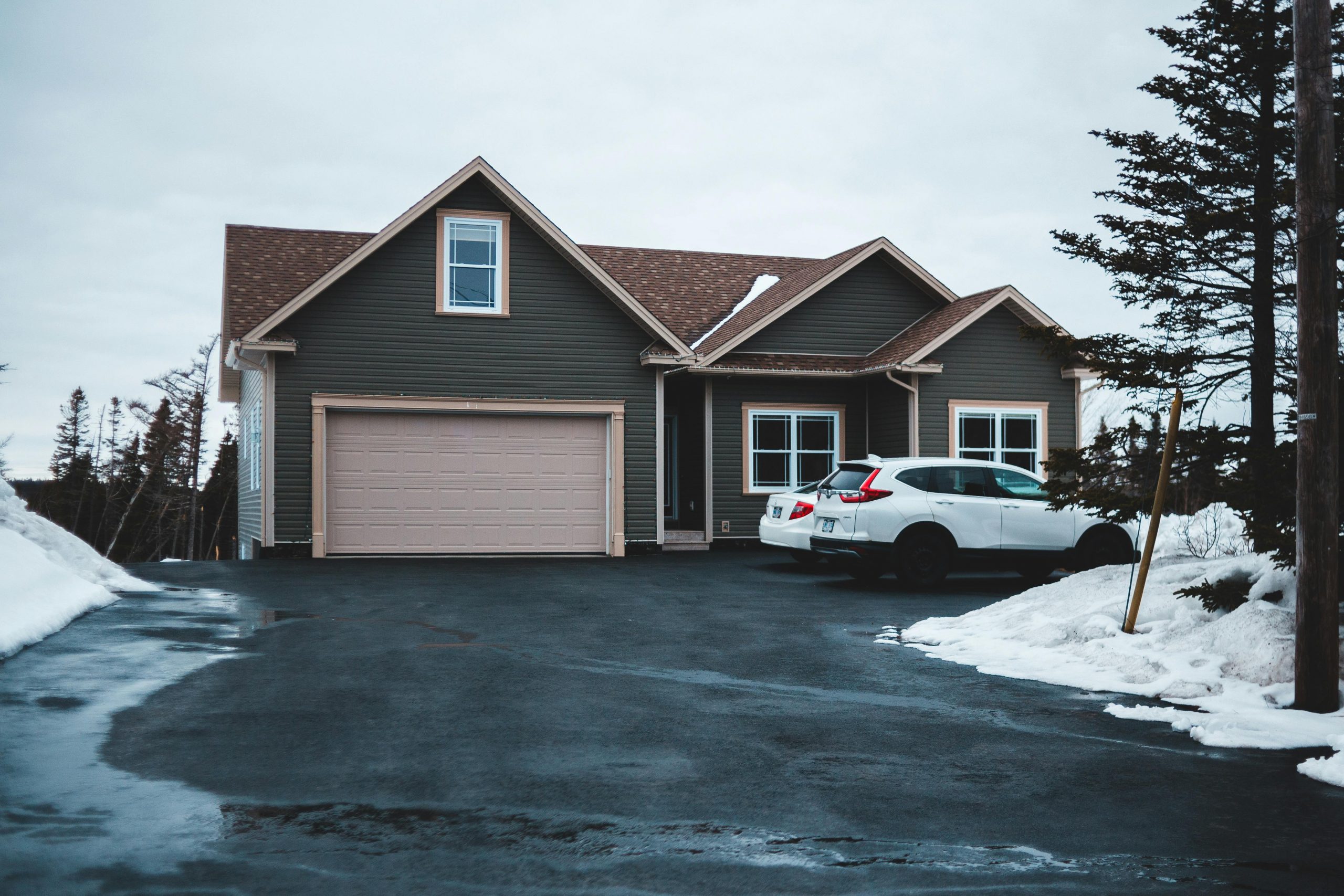

Highlights
- Regular inspections and cleaning prevent costly damage.
- Sealcoating every 2–3 years extends driveway lifespan.
- Promptly repair cracks and potholes to avoid worsening damage.
- Proper drainage and seasonal care protect your asphalt investment.
- Professional maintenance ensures safety, durability, and aesthetics.
Asphalt driveways are a popular choice for homeowners due to their durability, affordability, and classic appearance. However, like any surface exposed to weather, traffic, and environmental stressors, asphalt requires proper maintenance to remain functional and visually appealing. By following a structured maintenance routine, you can extend the lifespan of your driveway, prevent costly repairs, and maintain a smooth, safe surface for vehicles and pedestrians.
Regular care doesn’t just improve aesthetics—it enhances safety, prevents accidents caused by cracks or uneven surfaces, and protects your investment over the long term. This article provides practical, detailed advice on cleaning, repairing, sealcoating, and preventing damage to asphalt driveways.
Understanding Asphalt Driveways
Before diving into maintenance techniques, it’s important to understand the material you’re working with. Asphalt is composed of aggregates (sand, gravel, crushed stone) bound together with bitumen, a petroleum-based substance. Its flexibility allows it to withstand weight and temperature changes better than rigid materials like concrete, but it is still susceptible to cracking, potholes, and fading over time.
Common problems include:
- Cracks: Caused by temperature fluctuations, settling, or heavy vehicles.
- Potholes: Form when water infiltrates cracks, softens the base, and vehicle pressure causes the surface to collapse.
- Fading and surface wear: UV rays and chemicals like oil can degrade asphalt.
- Drainage issues: Standing water accelerates deterioration.
Proper maintenance protects against these problems, prolonging the life of your asphalt driveway and saving money in the long run.
Regular Cleaning and Inspection
Maintaining a clean and well-inspected asphalt driveway is the cornerstone of long-term care. Regular attention helps prevent damage, prolongs the surface life, and ensures both safety and curb appeal. Neglecting this routine can lead to small problems developing into costly repairs.
Cleaning Techniques:
- Sweeping: Use a stiff-bristled broom or a leaf blower to remove leaves, dirt, and debris at least once a week. This prevents surface abrasion, staining, and mold growth in shaded or damp areas. Regular sweeping is especially important during fall, when leaves can accumulate and trap moisture.
- Pressure Washing: Perform a deep clean with a pressure washer every 6–12 months. This removes stubborn dirt, grime, algae, and mildew that can erode asphalt over time. Use moderate pressure and keep the nozzle moving to avoid gouging or damaging the surface. Rinse thoroughly to remove cleaning residues.
- Oil and Chemical Removal: Spills from vehicles, fertilizers, or chemicals can damage asphalt if left untreated. Quickly blot oil or grease with an absorbent material like cat litter, sand, or commercial absorbents. For tougher stains, use specialized asphalt-safe cleaners, scrubbing gently with a brush. Immediate action can prevent dark staining and surface weakening.
Inspection Checklist:
- Cracks and Edge Damage: Check for small surface cracks, edge crumbling, or pothole formation. Early detection allows for timely patching or crack filling before water infiltration worsens the damage.
- Water Pooling: Inspect after rain to identify drainage issues. Water that collects on the surface can weaken the asphalt, erode the base, and create potholes. Addressing low spots or regrading may be necessary.
- Surface Wear: Examine areas that experience heavy traffic, such as entrances or parking zones. Look for fading, thinning, or raveling of the asphalt surface. These are signs the top layer is wearing out and may benefit from sealcoating.
Benefits of Regular Cleaning and Inspection:
- Prevent Major Repairs: Small cracks and stains caught early are much easier and cheaper to fix than widespread damage.
- Maintain Appearance: A clean, debris-free surface preserves the driveway’s smooth, dark finish and enhances curb appeal.
- Enhance Safety: Removing debris, oil, and uneven patches reduces slip-and-fall hazards and improves traction for vehicles and pedestrians.
By combining routine cleaning with careful inspection, you create a proactive maintenance strategy that extends the life of your driveway, keeps it safe, and maintains its aesthetic appeal.
Crack and Pothole Repairs
Even with preventive care, cracks and potholes may appear. Addressing them promptly prevents further damage.
Identifying repair needs:
- Small cracks: Less than ¼ inch wide can be filled with crack filler.
- Large cracks or potholes: May require patching with hot or cold asphalt mix.
Repair steps:
- Clean the area thoroughly to remove dirt and loose debris.
- Apply filler or patch material as per manufacturer instructions.
- Compact and smooth the surface to blend with surrounding asphalt.
Tips for durability:
- Keep traffic off the repair area until fully cured.
- Reinspect repaired areas regularly to ensure long-term stability.
Prompt repairs protect the base layer and prevent water infiltration, which is a primary cause of potholes.
Sealcoating Asphalt Driveways
Sealcoating is one of the most effective ways to protect your asphalt driveway. It creates a protective barrier against water, UV rays, oil spills, and harsh weather.
When to sealcoat:
- Every 2–3 years for driveways in regular use.
- After major repairs or resurfacing.
DIY vs. professional sealcoating:
- DIY: Cost-effective for small driveways, but requires proper equipment, preparation, and timing.
- Professional: Ensures even application, proper curing, and longer-lasting protection.
Sealcoating process:
- Clean and prep the surface.
- Fill any cracks or potholes.
- Apply sealcoat evenly using a brush, squeegee, or sprayer.
- Allow sufficient curing time before allowing traffic.
Safety and tips:
- Avoid sealcoating during rain or extreme heat.
- Follow all product instructions and wear protective equipment.
Sealcoating not only protects asphalt but also enhances the visual appeal with a uniform, deep black finish.
Preventative Maintenance Tips
Taking proactive measures can prevent damage and extend your driveway’s life.
Avoid heavy loads:
- Limit parking of heavy vehicles like trucks or RVs in one spot for extended periods.
Ensure proper drainage:
- Slope the driveway to prevent standing water.
- Use gravel or drainage channels to redirect runoff.
Seasonal care:
- Winter: Avoid salt and harsh chemicals, use plastic shovels for snow removal.
- Summer: Watch for soft spots caused by heat, repair promptly.
Protective measures:
- Place mats under grills or recreational vehicles to prevent staining.
- Avoid spilling gasoline, oils, or chemicals on the asphalt surface.
Consistent preventative measures reduce stress on the asphalt and limit costly repairs.
When to Call a Professional
Sometimes DIY maintenance isn’t enough. Professional intervention is necessary when:
- Extensive cracking or surface deterioration is present.
- Large potholes develop or the base layer is compromised.
- You want a full sealcoat for optimal protection and aesthetics.
Hiring experts, including those recognized among the top 10 asphalt contractors, ensures high-quality work, proper equipment use, and long-lasting results. Professionals also provide warranties, giving homeowners added peace of mind.
Cost Considerations
Maintaining an asphalt driveway is an investment. Understanding costs helps with budgeting.
DIY vs. professional:
- DIY sealcoating and minor repairs cost less but require time and skill.
- Professional services may seem pricier upfront but save money on potential future repairs.
Long-term savings:
- Regular maintenance prevents major repairs or full resurfacing.
- Extends the life of your driveway by several years, improving return on investment.
Budgeting tips:
- Set aside funds annually for inspection, crack repairs, and sealcoating.
- Schedule maintenance during off-peak seasons for better rates.
Enhancing Your Driveway’s Appearance
Maintaining a visually appealing driveway improves curb appeal and property value.
Aesthetic tips:
- Sealcoat for a uniform black finish.
- Keep edges neat and integrate landscaping to enhance the driveway’s look.
- Consider decorative treatments like stamped or patterned asphalt.
Curb appeal:
- A well-maintained driveway can increase property value and leave a positive impression on guests and potential buyers.
Conclusion
Proper maintenance of asphalt driveways is key to longevity, safety, and aesthetics. Regular cleaning, inspections, crack and pothole repairs, sealcoating, and preventative measures all contribute to a smooth, durable, and visually appealing driveway.
Whether you choose to handle maintenance yourself or hire professionals, consistent care ensures that your asphalt driveway remains a reliable and attractive feature of your home for years. By investing in proper upkeep, you save money, prevent accidents, and enhance your property’s overall value.








